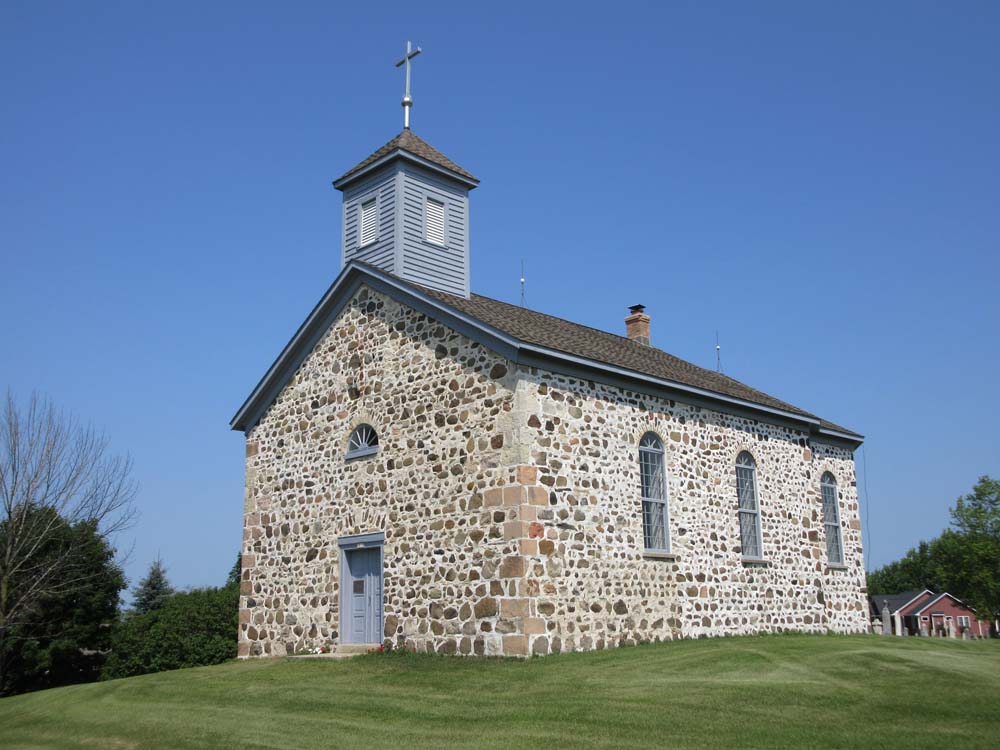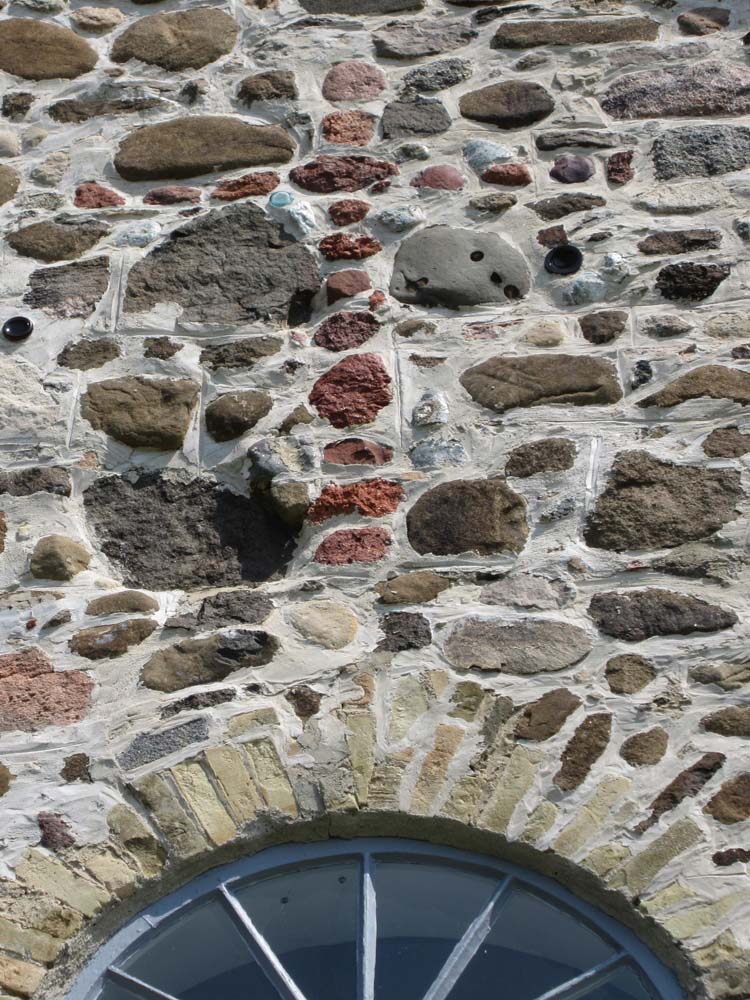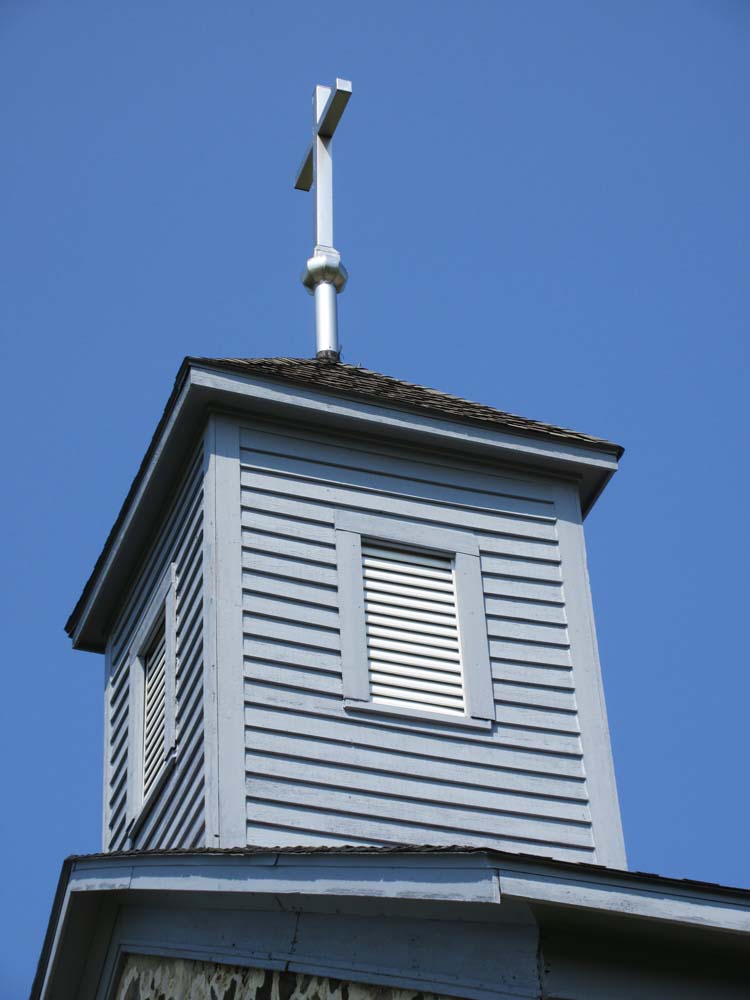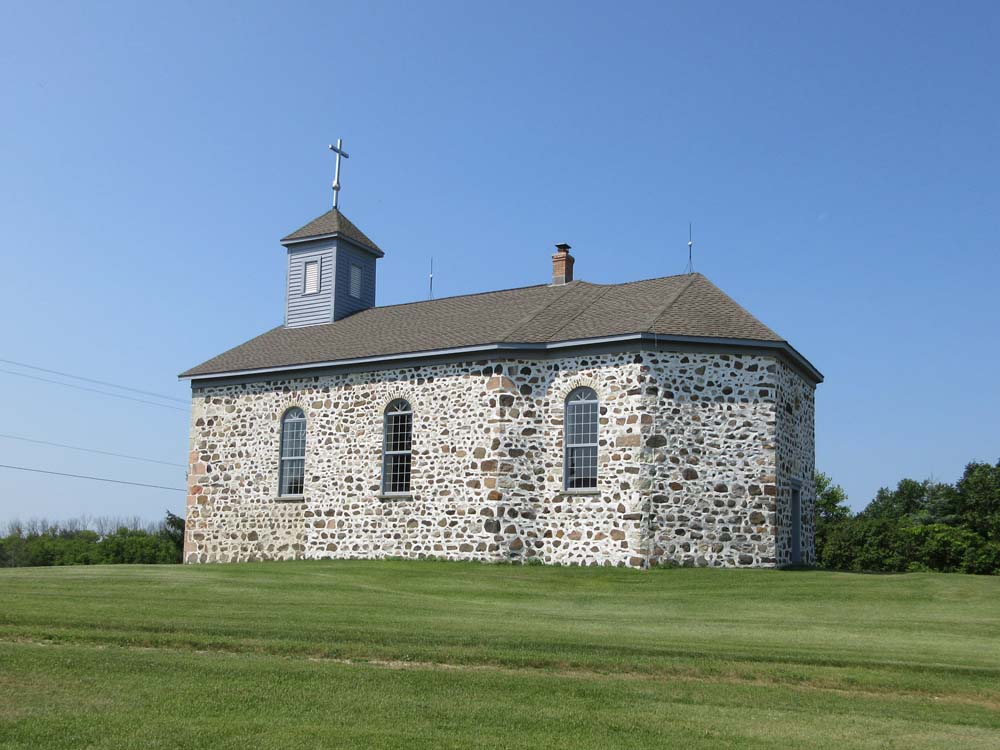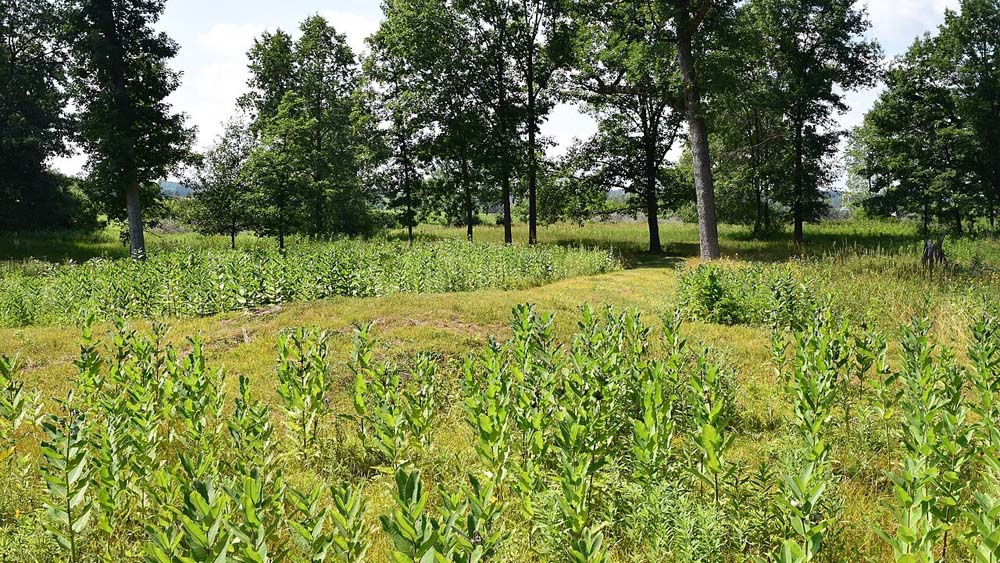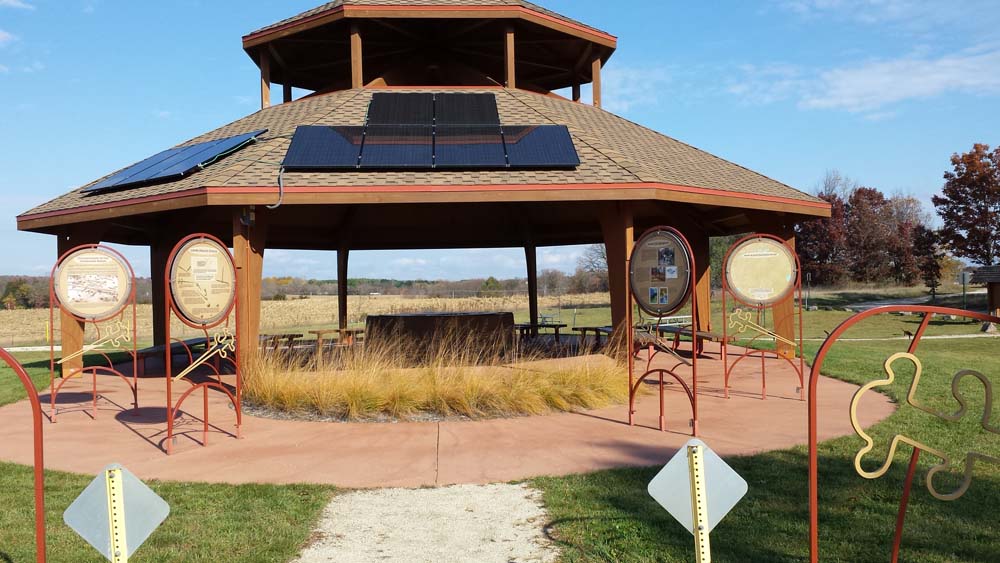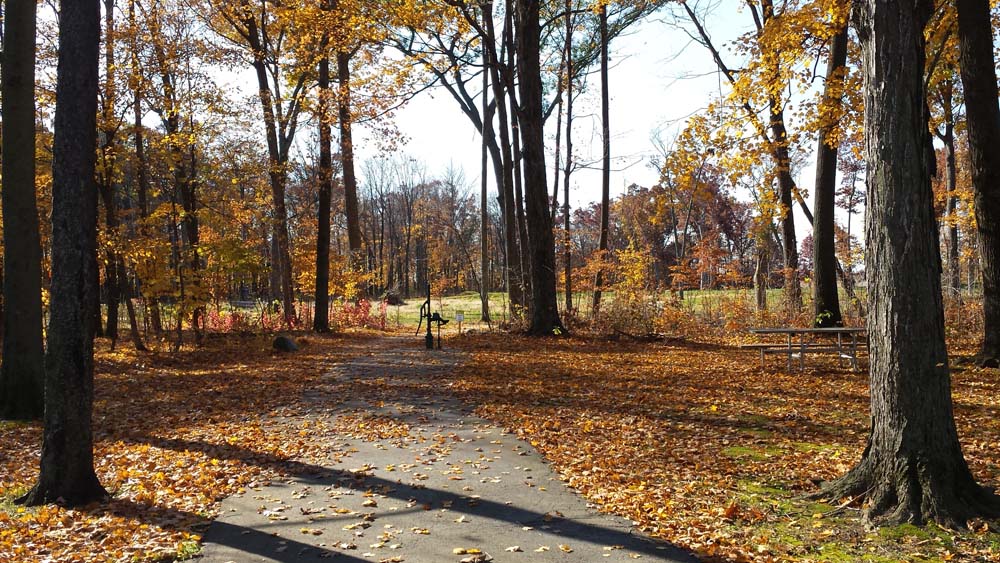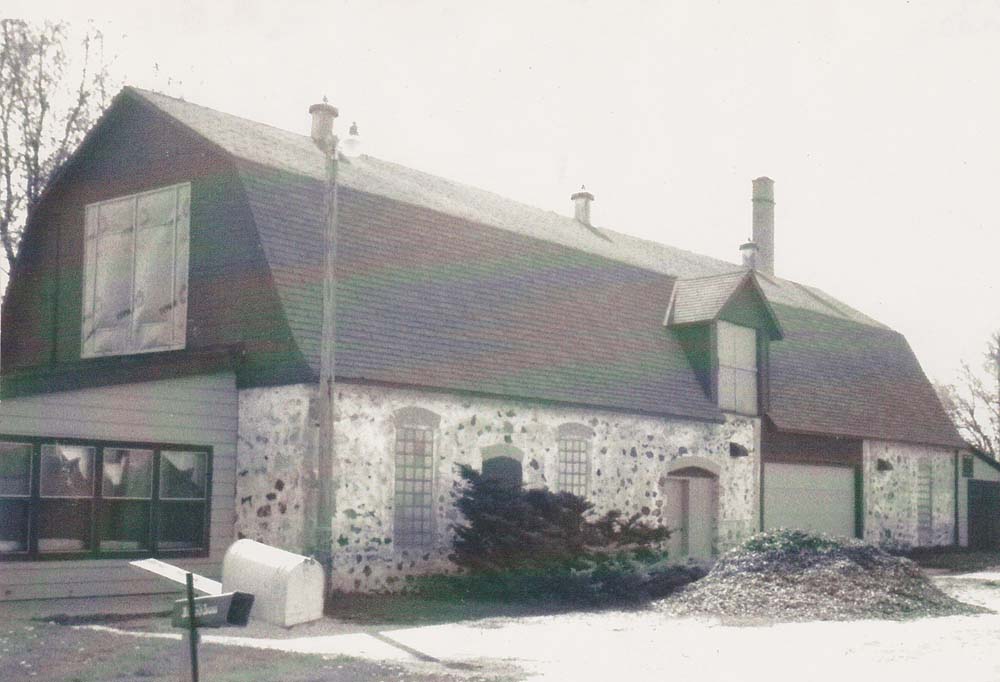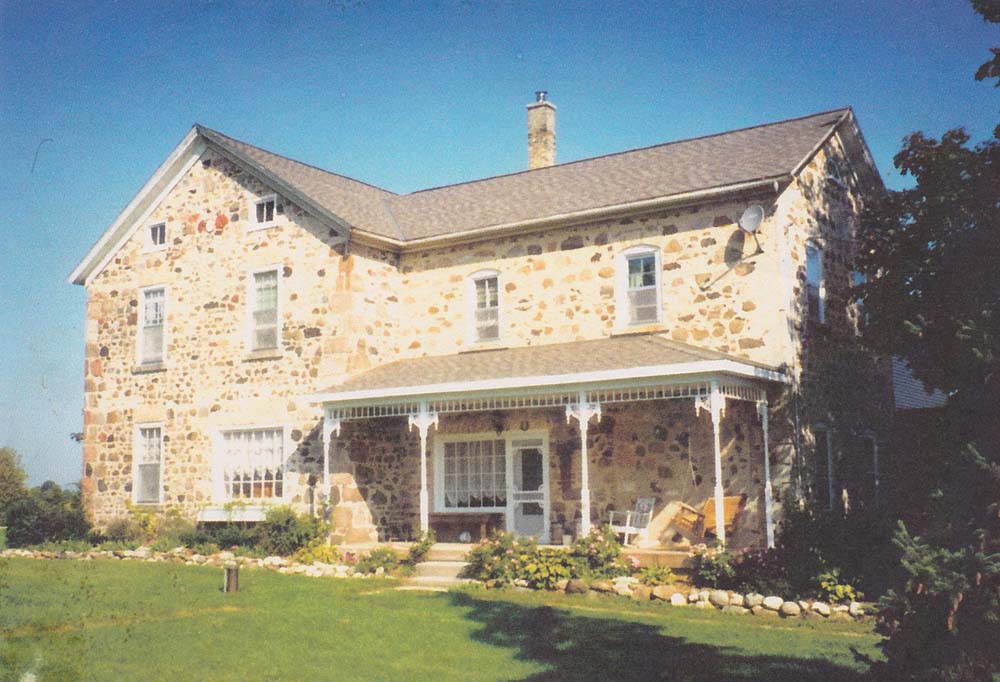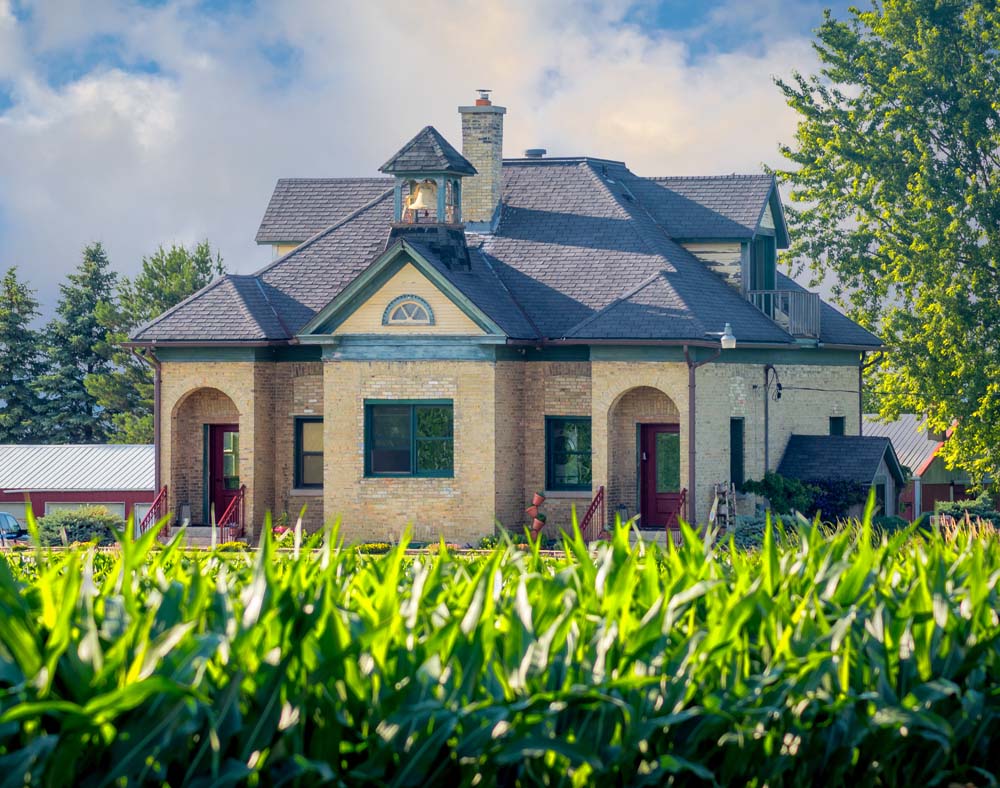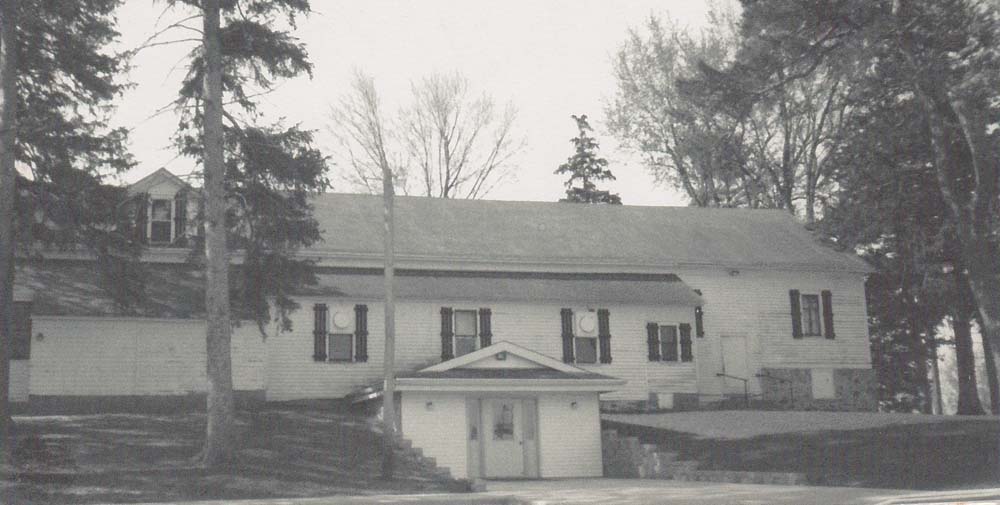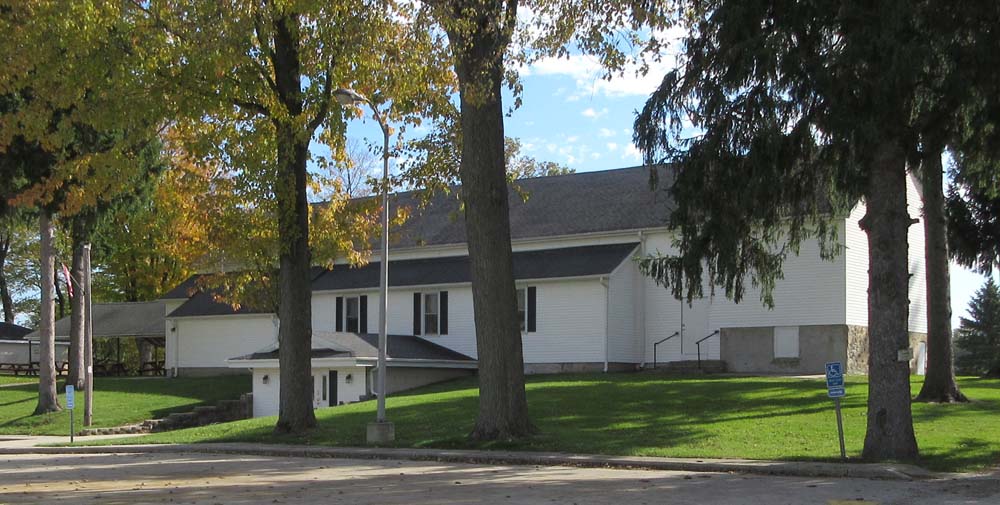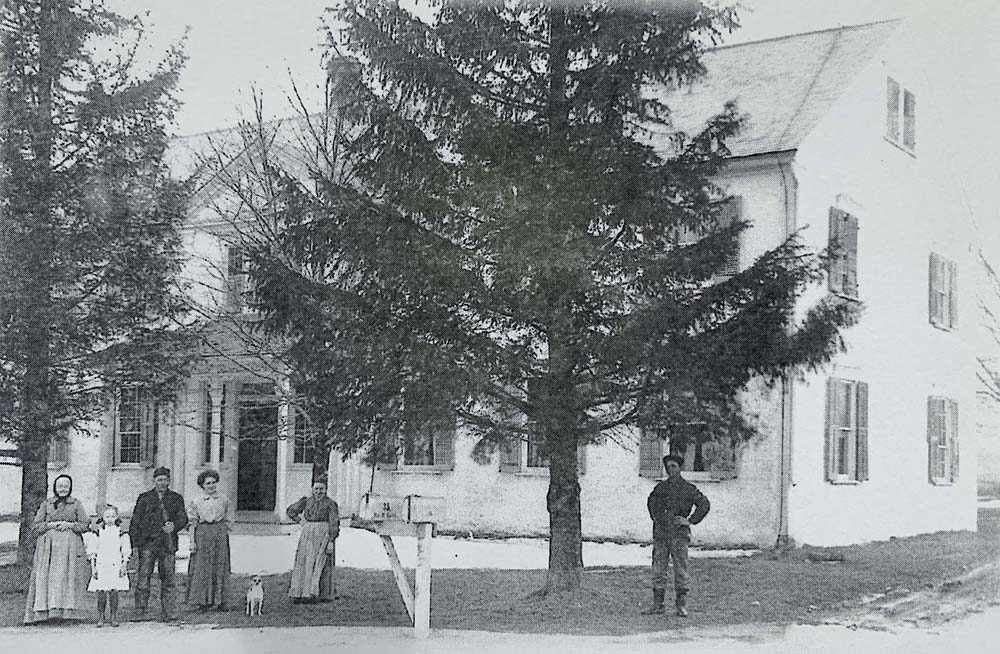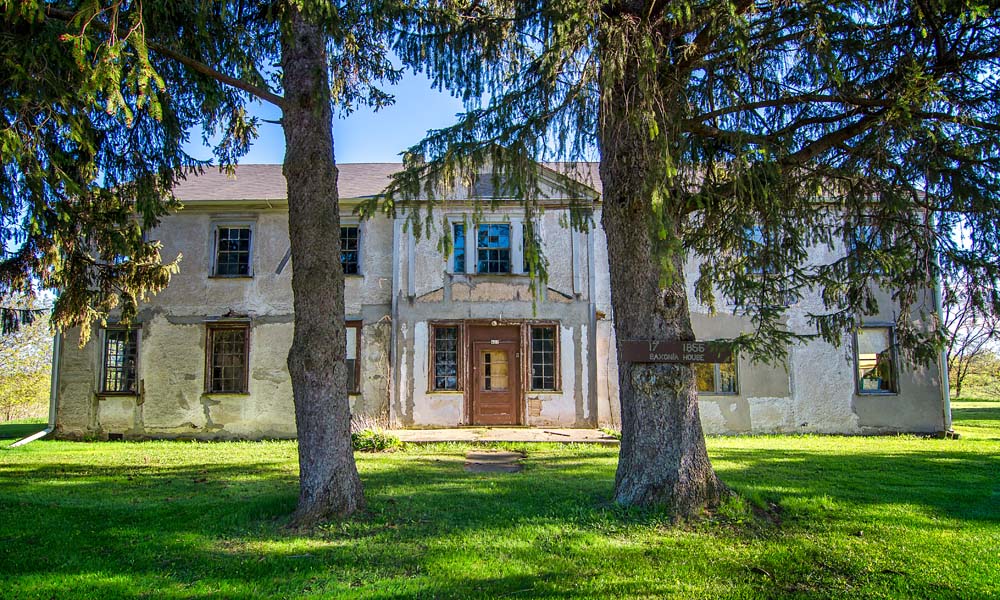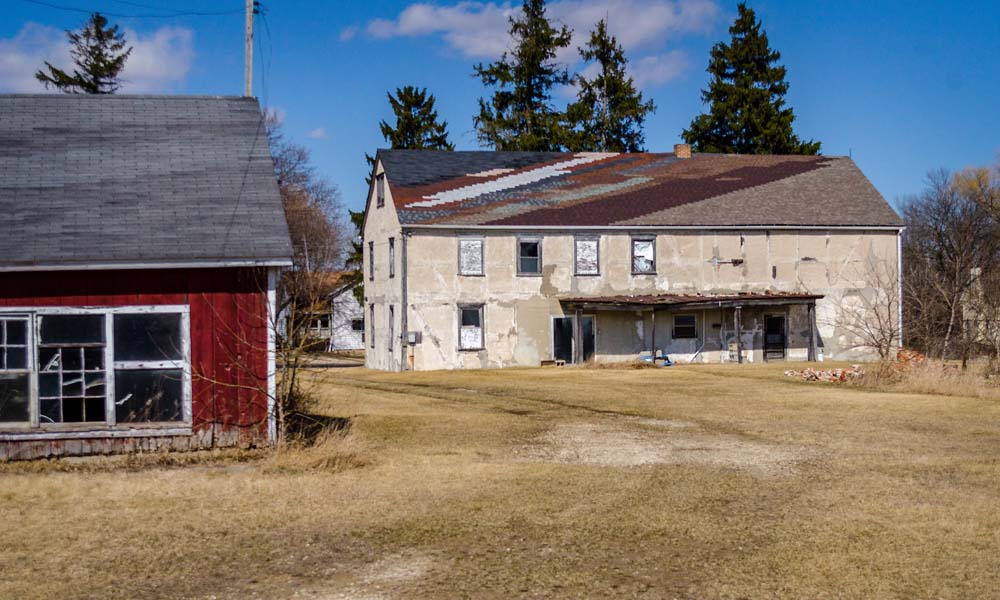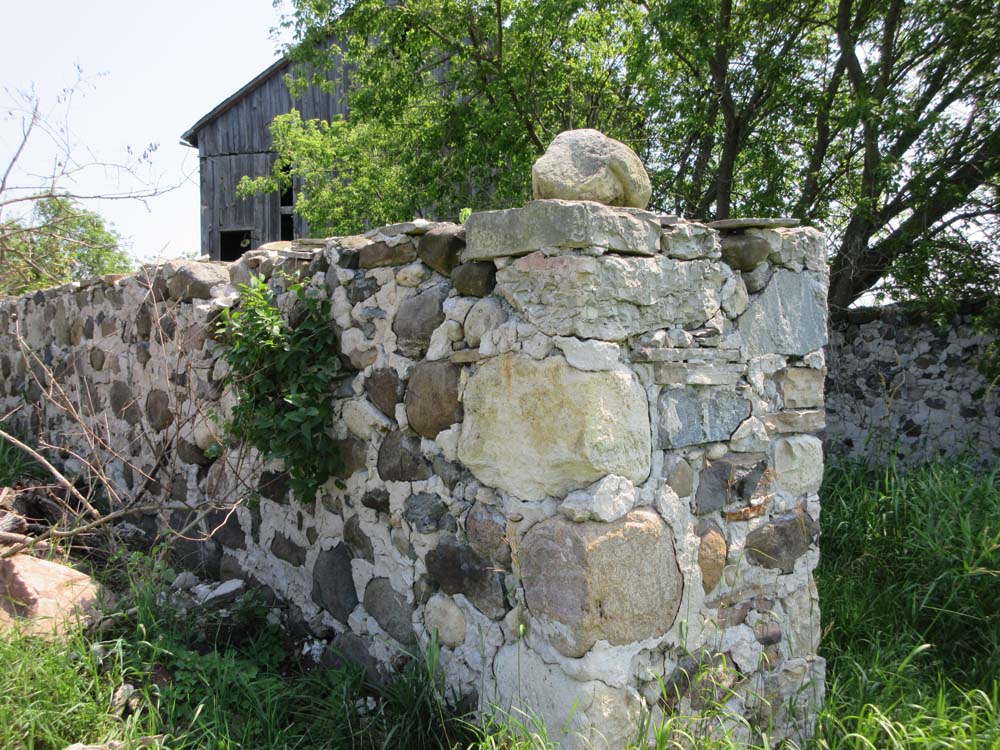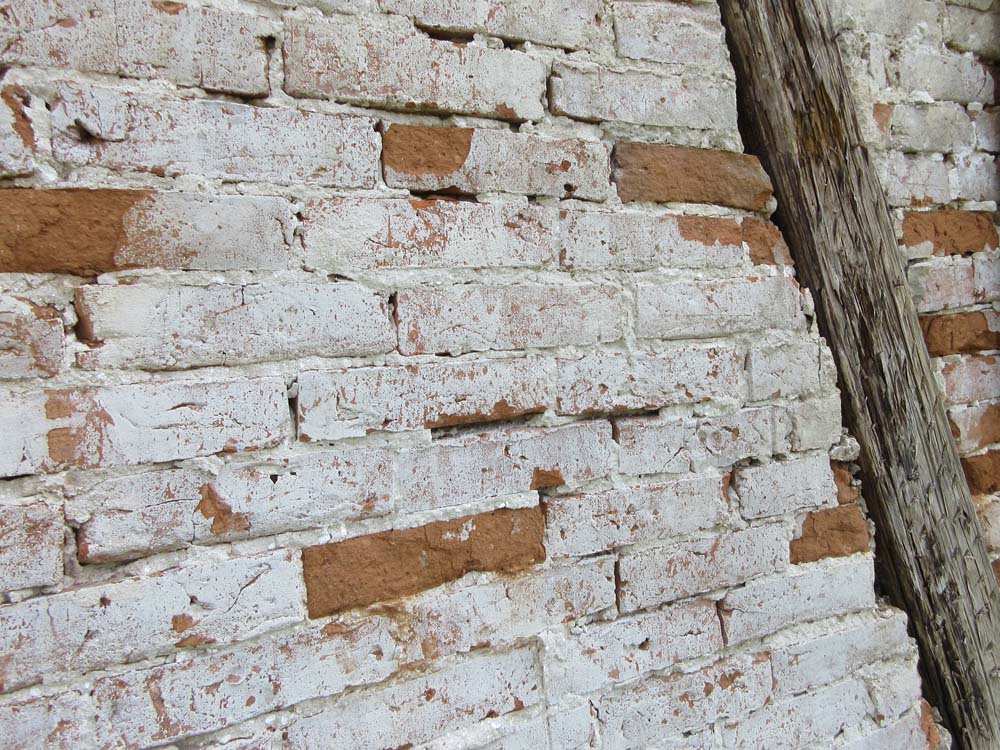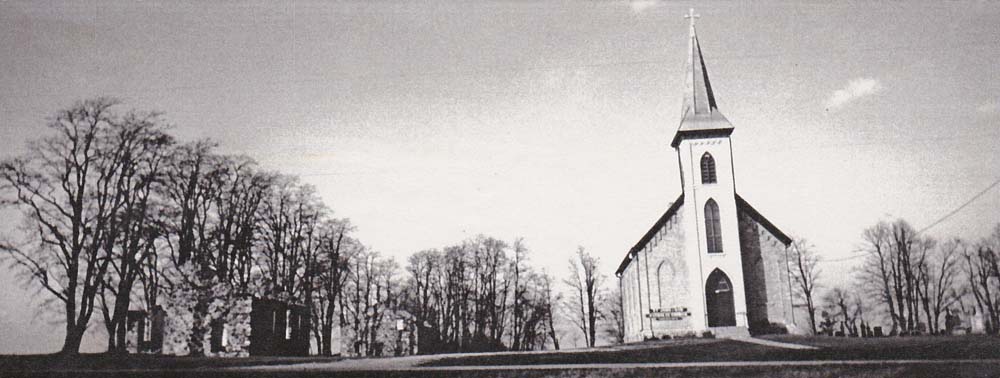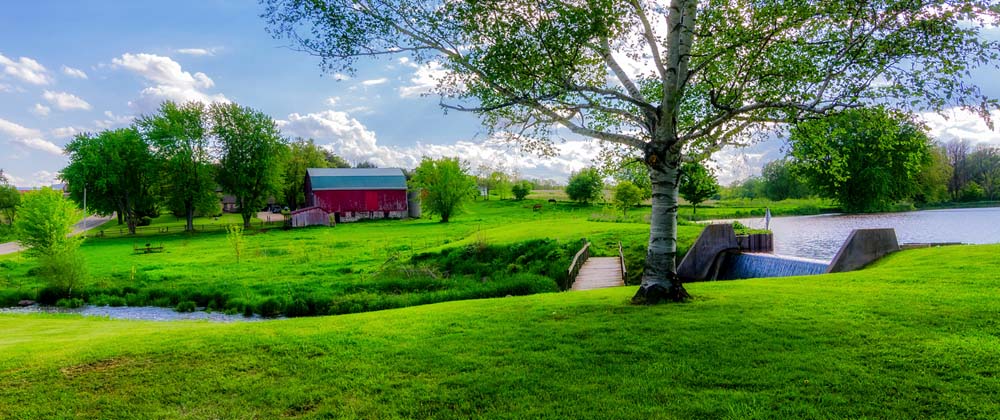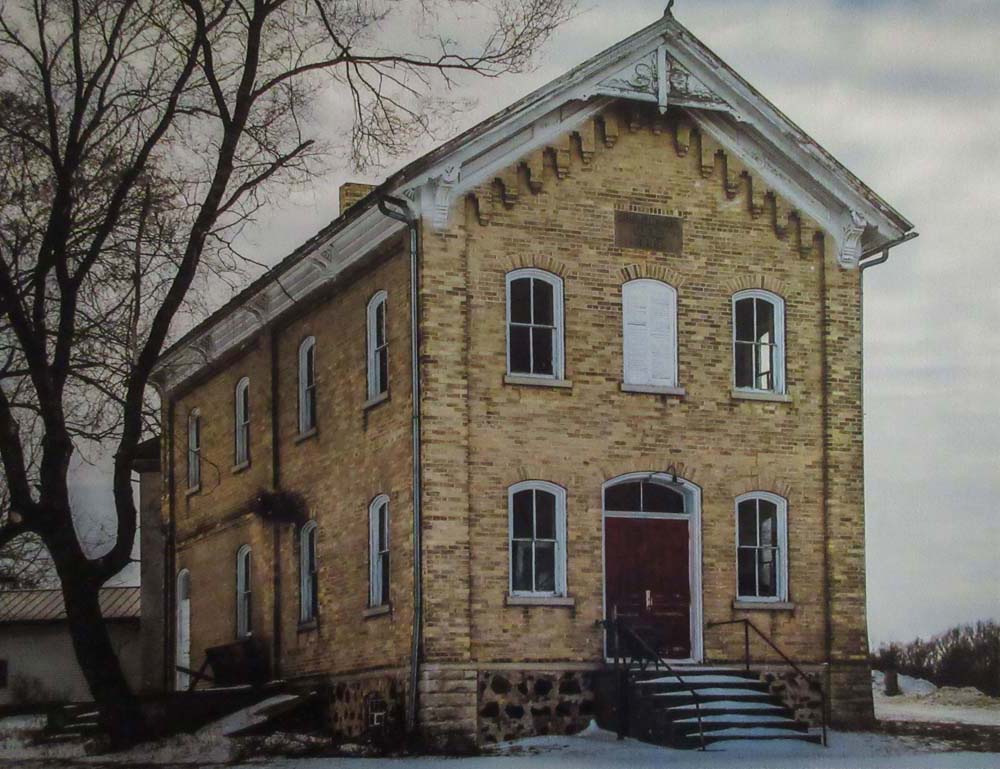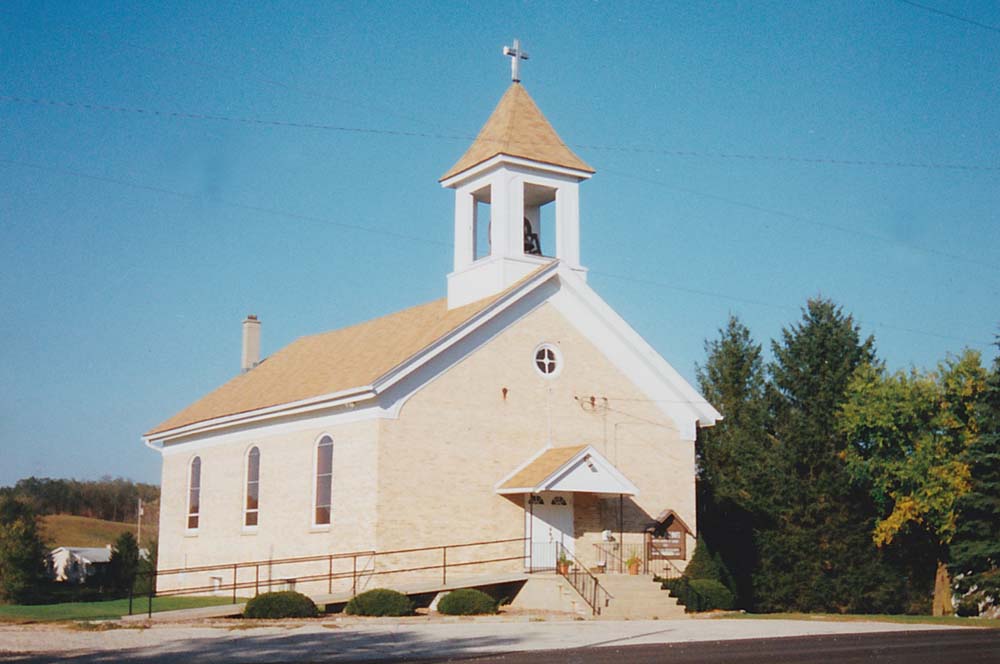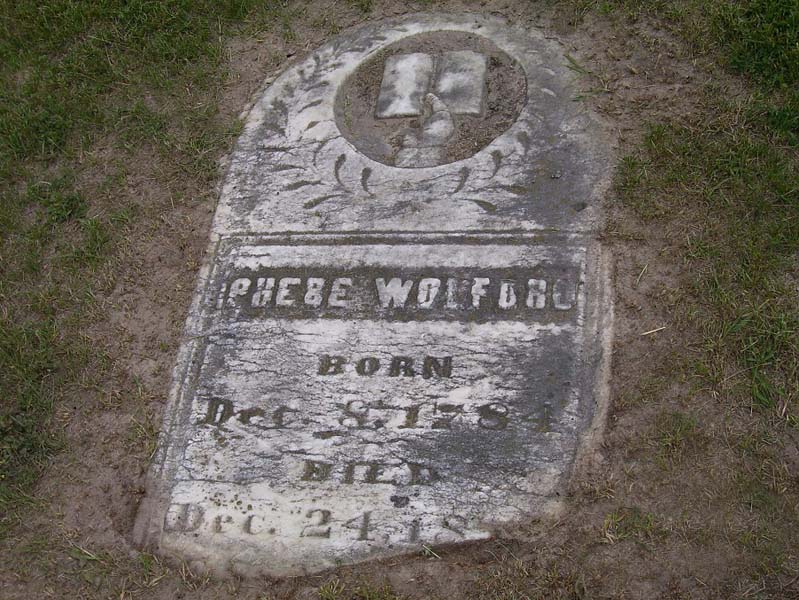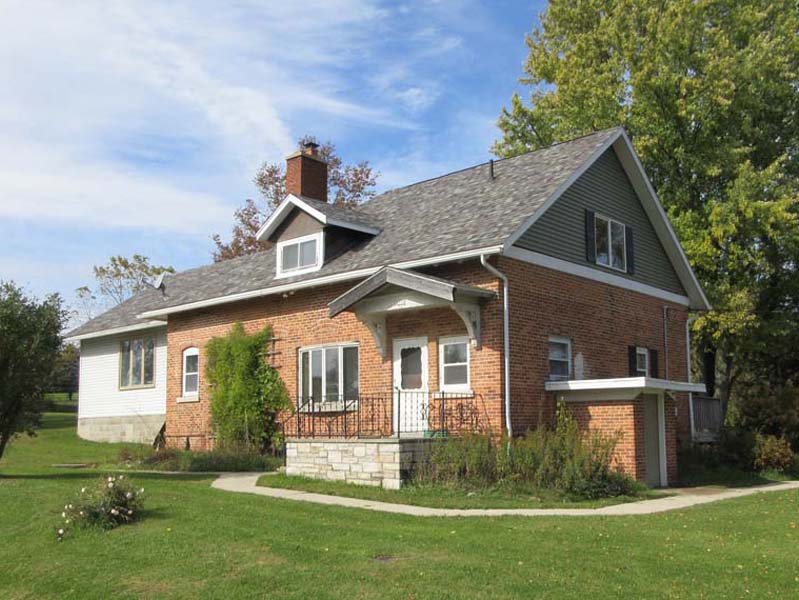St. Peter's Church
1010 East Newark Drive
St. Peter's Church, built in 1855, was the first Catholic community in Farmington. In 1861, the church was replaced with a fieldstone structure. The apse is formed with a half-octagonal shape, unusually beautiful and difficult to create out of the irregularly-shaped fieldstones. Darker stones were used in a decorative manner to fashion the shape of a cross on the exterior front wall. Used for only a few years, the parish was discontinued in 1879. Still in existence next to the church is the fieldstone public school building, built in 1874 and used for fifty years. Listed on the National Register of Historic Places and is a Washington County Landmark.
Lizard Mound State Park
2121 County Highway A
The effigy mounds at Lizard Mound are remnants of a prehistoric culture unique to Wisconsin. It is considered one of the best-preserved and most diverse prehistoric effigy mound sites in the State. It contains numerous mounds (700 - 1200 A.D.) in conical, linear, bird, panther, and lizard shapes. Originally known as the Hagner Indian Mounds, the State of Wisconsin established the Park in 1950 and named it after the most unique mound in the Park. The mounds are preserved in a woodland setting amidst a one-mile self-directed nature trail. Washington County acquired the Park in 1986. In 2022, park ownership was transferred back to the State of Wisconsin and is managed by WI Department of Natural Resources, Kettle Moraine State Forest-Northern Unit. Listed on the National Register of Historic Places and a Washington County Landmark.
Learn MoreCheeseville
912 County Highway A
Cheeseville is a crossroads hamlet named for the 1881 Cheeseville Dairy. Cheeseville School was the first school in the county to have indoor plumbing. The present school building is the third Cheeseville School, built of brick in 1912. It is now a private home. Across from the school is the beautiful 1862 fieldstone farmhouse.
Turner Hall
523 County Highway H – Fillmore
The Turn Verein (Turners) Society, a German athletic and intellectual group, was organized in 1862 and built the Hall in 1867. It became the cultural center for the Saxony immigrants. There were plays and concerts by the local brass band and singing groups, and it became an important part of Fillmore's early social life. The Fillmore Turner Society was officially organized in 1930 and today manages the grounds which are used for weddings, parties, and baseball.
Saxonia House
421 County Highway H – Fillmore
German immigrants Ernst and Liberta Klessig built this large half-timbered-under-stucco house in 1855. It operated as an inn, tavern, dance hall, post office, and also hosted the local Turner Society. Ernst added a brewery in 1860 with a cave with a vaulted brick ceiling for lagering and storing the beer.
Half-timber “fachwerk” construction is reported to be the most important and distinctive architectural style brought to the United States by European immigrants. The Saxonia House is a rare example of this architecture and is one of the largest buildings of its kind in Wisconsin. The building is currently owned by Friends of Saxonia House and is being restored. Saxonia House is a Washington County Landmark.
Learn MoreSt. John of God Church
1488 Highland Drive
The Parish of St. John of God was organized in 1859 by early Irish settlers to the area. The first church building was constructed in 1860. Their second church, of Gothic Revival architecture, was built in 1899. It is built with local brick and rests on a fieldstone foundation. Many of the bricks used in the structure were salvaged from the original 1860 building. The cemetery is immediately east of the church with the earliest graves dating from the 1850s. A combined public/parochial schoolhouse and convent used to stand on the site. Listed on the National Register of Historic Places.
Learn MoreBoltonville Reliance Flouring Mills
9298 Boltonville Road – Boltonville
Early settlers Harlow Bolton, Asa Varney and William H. Willis took advantage of the energy of water and built a grist mill in 1854. A dam was built several hundred yards upstream to form a pond. The Mill's huge grinding wheels were powered by running water through a narrow channel which the miller controlled by opening and closing gates as needed. The Mill was the first structure built in the village of Boltonville, followed by the saltbox homes that the Yankee immigrants built.
Reliance Roller Mills operated for decades. Ben Wierman took over in 1914, calling it the Boltonville Mill. The Mill was sold to Random Lake Co-op in 1956. It is still in operation today as Tom's Old Country Mill. The Boltonville Mill is a Washington County Landmark.
Oddfellow Hall
1325 Scenic Drive – Boltonville
The Independent Order of Oddfellows Lodge 96 was originally organized in Barton in 1870. In 1888, they built a meeting hall of their own in Boltonville. By 1900, the group disbanded and sold the building to Modern Woodman Sunrise Camp 2256 for $800. This front-gabled Italianate building was constructed of locally-made brick.
Free Will Baptist Church/St. John's UCC
1332 Scenic Drive – Boltonville
In 1872, Yankee settlers organized the Free Will Baptist Society of Boltonville and built this church which was dedicated in 1873. In the 1880s, the building was home to a Sunday school for as many as 80 students and a church group named “Ladies of Boltonville.” It was also the location of the Literary Society of Boltonville, which maintained the first public library in the community, as well as the meeting place of the local temperance group. The church later became St. John's United Church of Christ. It is now a private residence. This former church is a Washington County Landmark.
Orchard Grove
County Highways H & HH
This crossroads hamlet was the home of the Wescotts, the first family who settled the area. It is the site of the first County cheese factory, built in 1871. The cemetery is the historic first community cemetery with graves of some of the earliest settlers, some born in the 18th century. The brick schoolhouse is a private home today. Orchard Grove is the childhood home of author Glenway Wescott.

